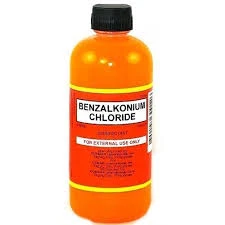Types and Applications of Flocculants in Industrial Processes
Understanding Flocculant Types and Their Applications
Flocculants are chemical agents that promote the clumping or agglomeration of particles in a liquid, aiding in the separation of suspended solids from liquids. This process, known as flocculation, is essential in various industries, including water treatment, mining, paper manufacturing, and food processing. The choice of flocculant type can significantly impact the efficiency and efficacy of the treatment process. This article explores the various types of flocculants, their properties, and their applications.
Types of Flocculants
Flocculants can be generally categorized into three main types synthetic organic flocculants, natural flocculants, and inorganic flocculants
.1. Synthetic Organic Flocculants These are man-made polymers that are highly effective in promoting flocculation. They vary in composition, molecular weight, and charge density. Common examples include polyacrylamide (PAM) and polyamine flocculants. Synthetic flocculants are widely used due to their customizable properties, allowing for selective use in different applications. High molecular weight flocculants are particularly effective at binding particles and are commonly used in wastewater treatment plants to enhance sludge settling. However, the environmental impact of synthetic flocculants is a concern, leading to increased research on biodegradable alternatives.
2. Natural Flocculants Derived from natural sources, these flocculants are generally more environmentally friendly. They include substances like starch, alginate, and chitosan. Natural flocculants have gained popularity in water treatment processes due to their non-toxic nature and biodegradability. Starch, for example, is often used in the paper industry to improve fiber retention during the papermaking process. However, natural flocculants may not be as effective as their synthetic counterparts in specific applications where high performance is essential.
flocculant types

3. Inorganic Flocculants Commonly used inorganic flocculants include aluminum sulfate, ferric chloride, and polyaluminum chloride (PAC). These compounds work by neutralizing the charge on suspended particles, allowing them to aggregate and settle more quickly. Inorganic flocculants are favored for their cost-effectiveness and rapid action in various applications, particularly in municipal water treatment. However, they may introduce additional minerals to the water, which can be a drawback in some contexts.
Applications of Flocculants
The applications of flocculants are vast and diverse. In water and wastewater treatment, flocculants play a crucial role in clarifying and purifying water. They help reduce turbidity and remove contaminants, making water safer for consumption. In the mining industry, flocculants are used to separate valuable minerals from ore during the flotation process, enhancing recovery rates.
In the paper industry, flocculants contribute to increased efficiency in fiber recovery and improve the physical properties of the final product. In the food industry, natural flocculants like chitosan are employed for clarifying juices and wines, enhancing the quality and appearance of the final products.
Conclusion
Understanding the different types of flocculants is essential for selecting the right agent for a particular application. Each type of flocculant has its unique properties and advantages, which must be matched with specific operational needs. While synthetic flocculants offer customizable performance and efficiency, natural options present environmentally friendly alternatives. The ongoing research and development in this field aim to strike a balance between performance, cost-effectiveness, and environmental sustainability, ensuring that flocculants continue to play a vital role in various industries. As water scarcity and environmental concerns become increasingly pressing, the significance of effective flocculation processes will only grow, pushing for innovations in flocculant technology.
-
The Ultimate Guide to Flocculants: Transforming Water TreatmentNewsNov.01,2024
-
Improve Your Water Treatment Solutions with PolyacrylamideNewsNov.01,2024
-
Enhance Your Water TreatmentNewsNov.01,2024
-
Empower You to Achieve the Highest Standards of Water QualityNewsNov.01,2024
-
Effective Scale InhibitorsNewsNov.01,2024
-
Discover the Power of Poly Aluminum Chloride in Water TreatmentNewsNov.01,2024





